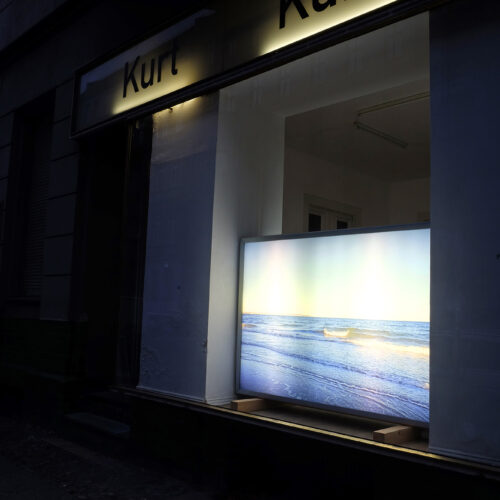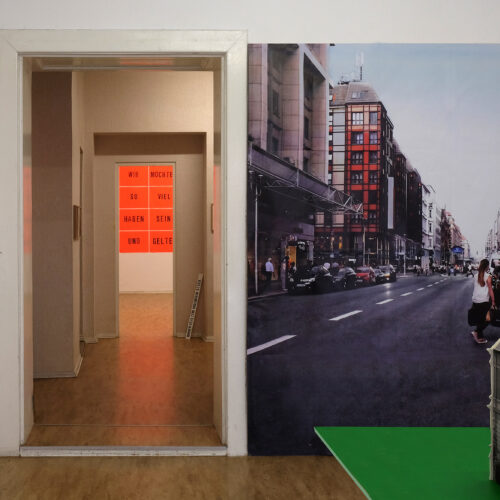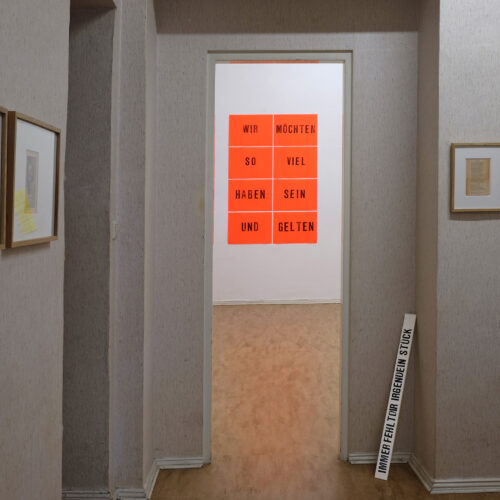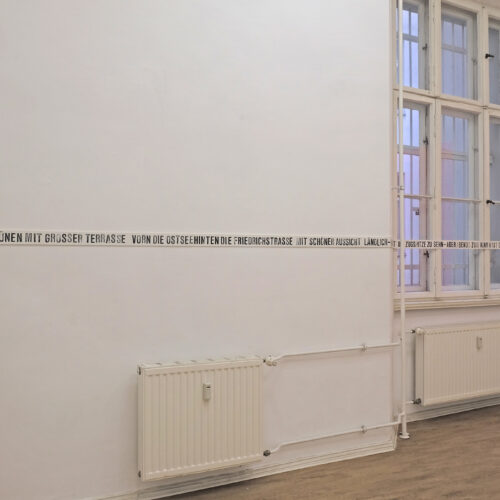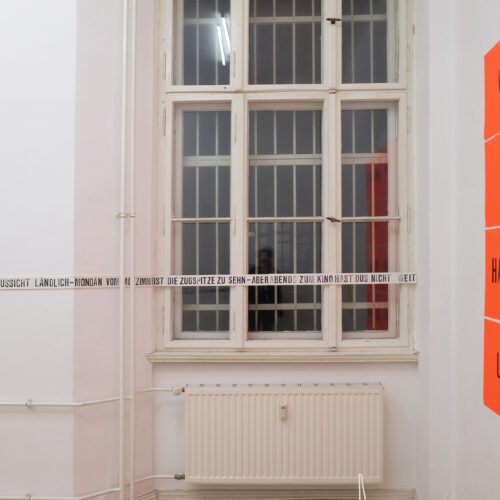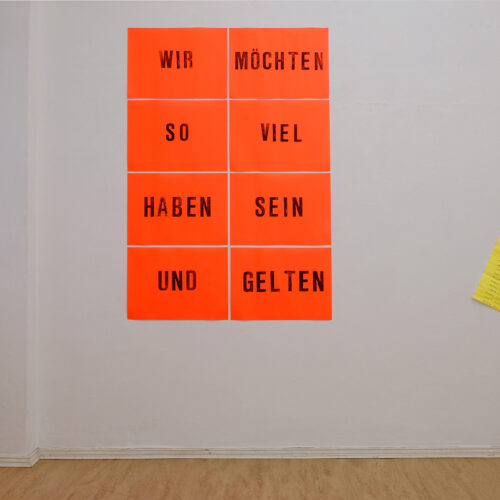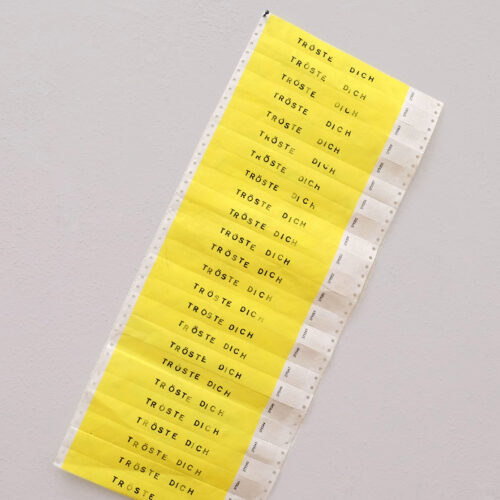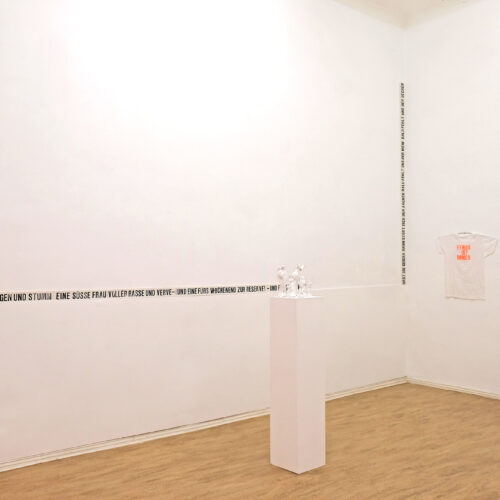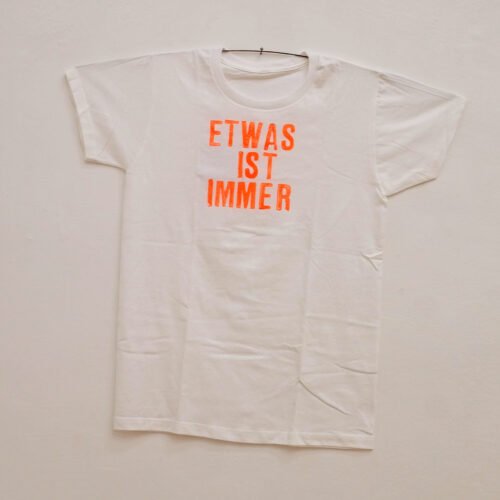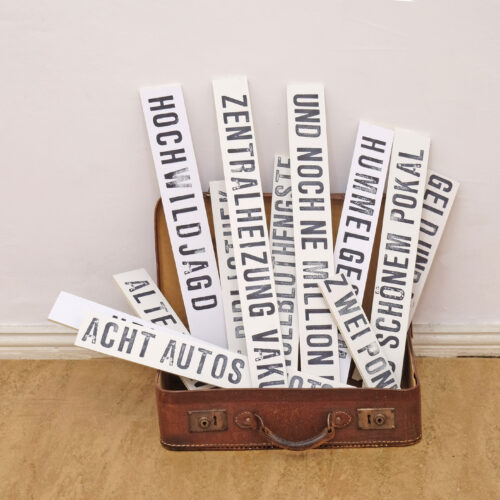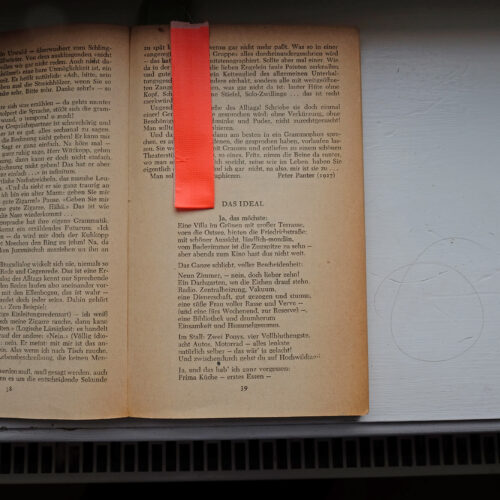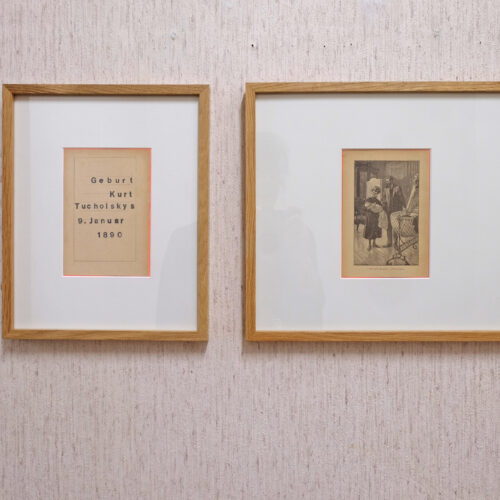mots croisés | 2019 | Kurt-Kurt, Kunst und Kontext im Stadtlabor Berlin–Moabit
mots croisés
Was ist ideal?
Für ihre Ausstellung im Projektraum Kurt-Kurt entwickelt Seraphina Lenz die Installation mots croisés. Sie nimmt das Gedicht Das Ideal von Kurt Tucholskys zum Ausgangspunkt und lässt sowohl im installativen wie auch im gedanklichen Raum das „Heute zwischen Gestern und Morgen“ kreuzen.
Im Gedicht Das Ideal aus dem Jahr 1927 beschreibt Kurt Tucholsky die unerreichbare Wunschvorstellung eines vordergründig perfekten Lebens. Er spricht darin vom Hin- und Hergerissensein zwischen Betriebsamkeit und Stille, von sinnlichen Freuden und Luxus.
mehr Text
In der mehrteiligen Installation für die Räume von Kurt-Kurt bleibt Seraphina Lenz nah am Text und spürt den Details nach wie in einem close reading Prozess. Sie untersucht einzelne Worte, findet Bilder, inszeniert das Gedicht räumlich und macht es begehbar. So schafft sie durch ihre „Inszenierungen“ Bezüge zwischen Interpretation, historischen und biografischen Aspekten und den unterschwelligen oder teilweise auch offensichtlichen Entwicklungen der Gegenwart.
Als berühmter Satiriker hat Tucholsky selber viel über Witze geschrieben, besonders gern über ihr Misslingen. Witze bedürfen eines exakten Timings. Kommen sie hundert Jahre zu spät, verschieben sich die Zeitläufte und es stellt sich die Frage, ob und wo der Witz dennoch treffen kann. So analysiert Seraphina Lenz in der explizit für diese Ausstellung entwickelten Arbeit auch, wie Tucholsky als erfolgreicher Feuilletonist präzise den Ton seiner Zeit im Übergang zwischen Kaiserreich und Weimarer Republik traf. Die genauen Beobachtungen des gegenwärtig gesellschaftlichen Geschehens und die Kommentierung tagespolitischer Ereignisse haben einen geschichtlichen Klang, so dass sich die Frage stellt, welche Pointen heute noch treffen.
Text: Kurt-Kurt
mots croisés
What is ideal?
Seraphina Lenz has developed the installation mots croisés for her exhibition in the Kurt-Kurt project space. She takes Kurt Tucholsky's poem “Das Ideal” as her starting point and allows the "today between yesterday and tomorrow" to intersect in both the installation and the mental space.
In the poem “Das Ideal” from 1927, Kurt Tucholsky describes the unattainable wishful thinking of a superficially perfect life. In it, he speaks of being torn between busyness and stillness, sensual pleasures and luxury.
more text
In the multi-part installation for Kurt-Kurt, Seraphina Lenz stays close to the text and traces the details as if in a close reading process.
She examines individual words, finds images, stages the poem spatially and makes it accessible. In this way, her "staging" creates links between interpretation, historical and biographical aspects and the subliminal or sometimes obvious developments of the present.
As a famous satirist, Tucholsky wrote a lot about jokes, especially on how they fail. Jokes require precise timing. If they come a hundred years too late, the course of time shifts and the question arises as to whether and where the joke can still hit the mark. In the work developed explicitly for this exhibition, Seraphina Lenz also analyzes how Tucholsky, as a successful feuilletonist, precisely hit the tone of his time in the transition between the German Empire and the Weimar Republic. The precise observations of current social events and the commentary on daily political events have a historical ring to them, which raises the question of which punchlines are still relevant today.
Text by Kurt-Kurt
